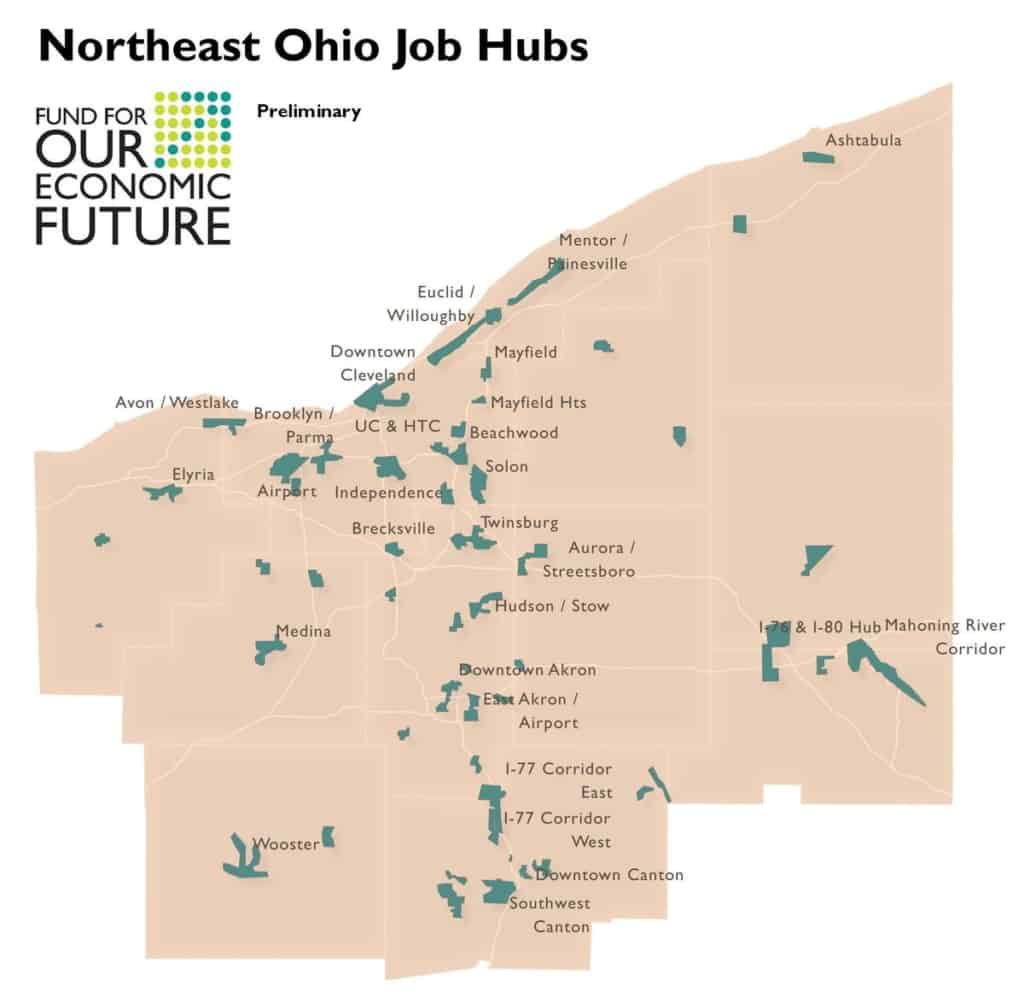The Next Evolution
The Fund For Our Economic Future in northeast Ohio published a report on job hubs in its region. While it is interesting to learn about the dynamics of a fellow purple state, the report is relevant to non-Ohioans because of the distinctive framework for thinking about geography. It defines job hubs as specific places of concentrated economic activity in a region and argues that these hubs should be part of a parallel boundary system for planning and geography. Many of our existing boundaries and classification systems, e.g., neighborhoods and census tracts, are centered around residential patterns and not business patterns. The job hubs research shows how that can create policymaking blind spots for governments and other institutions that shape our communities.

The job hub framework follows up an earlier report on the Geography of Jobs, which is also a worthwhile read.
In the Weeds
International trade debates happen cyclically and federal policymakers appear to be heading to a new round. The Cato Institute published a comprehensive look on the U.S. experience with trade protections. For those interested in a full-bodied but readable account of significant moments in trade history, this will prepare you for the upcoming debate, particularly from Cato’s free trade point of view. For those not so inclined, the analysis has several useful tables demonstrating the economic effects of protectionist policies and still worth a quick review.
For Your Consideration
The Rand Corporation released a “user guide” for Emergency Preparedness. It is a great checklist tool and strategic planning resource for local governments, nonprofits, and other community-shaping organizations.
The tool’s format and easy-to-access layout is just as noteworthy as the substance. The guide is substantively strong while still being intuitive and easy to navigate, especially for those interested a quick look. The headings and subheadings are clear, concise and formatted for the reader to quickly move from one section to another.
In Case You Missed It
The Center’s partner organization, EdNC is in the midst of a great series on North Carolina’s Teacher Pipeline. If you have ever wondered how the supply side of teaching works, they have the answer as well as useful context for how all of the moving parts fit together.
What we're reading
Cultivating a new generation of conservation leaders
Modeled after the New Deal's Civilian Conservation Corps and a youth program in Vermont, the N.C. Youth Conservation Corps strives to engage young leaders and support preserved spaces.... Read the rest-
Elections and the challenges of technology
-
Making economic development strategies more strategic
-
Why ineffective teachers rarely get low ratings
-
A law-and-order approach to opioids won’t work
-
Highly ideological members of Congress have more Facebook followers than moderates do
-
Rise of the Government Chatbot


